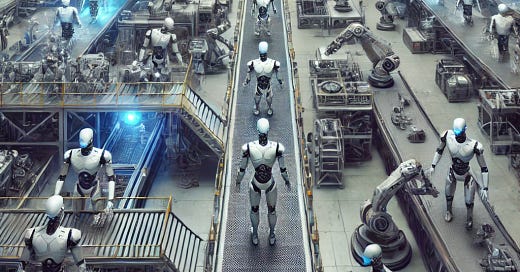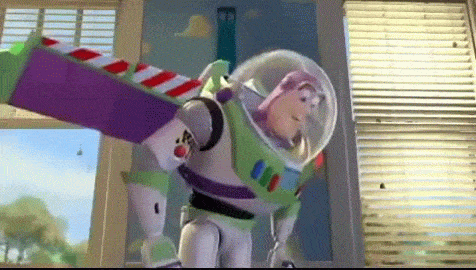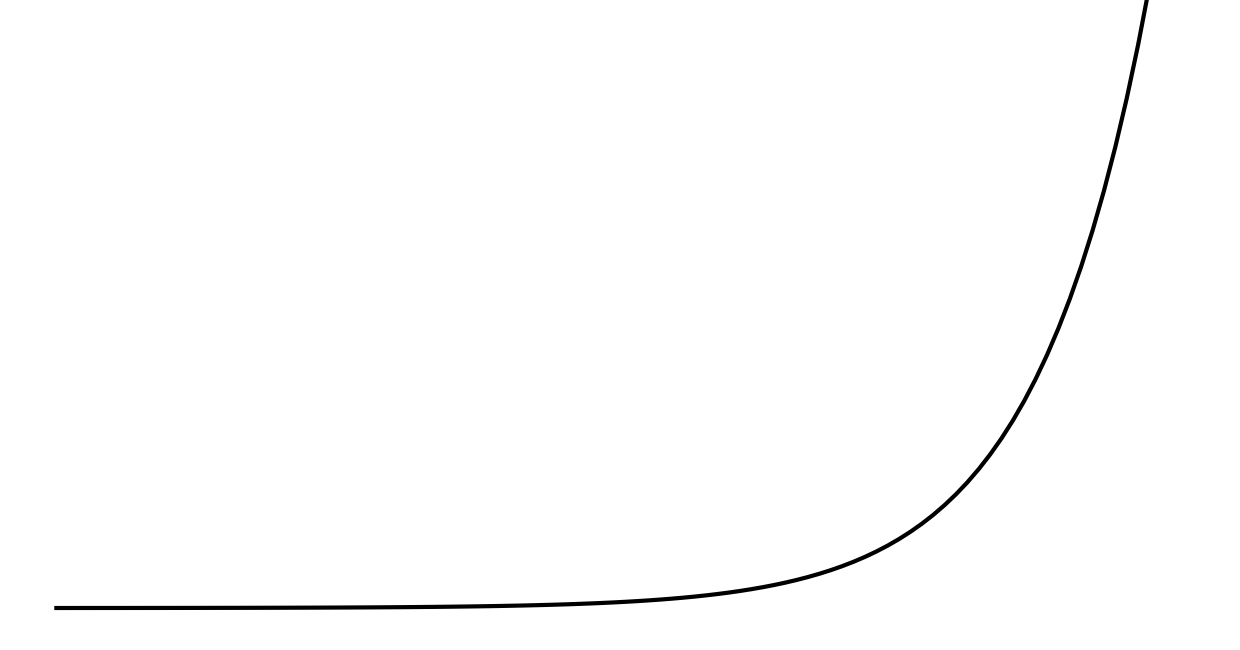What if you could build a really good robot? You could spend ten years working out the details with an enormous team of product testers, etc. It takes a long time because you want to get this robot right, because this robot’s main job will be to create another robot.
This new robot is capable of building a new robot in a year that’s just like itself, so you set it to its task right away. At the end of that first year, you now have two identical robots, both capable of building a new robot just like them every year.
After two years, you have four robots, all equally capable of reproducing, although you don’t really think of it that way… not yet, anyway.
Four becomes eight, eight becomes sixteen, and after ten years of doing this, you’ve got a fleet of just over a thousand robots, ready to build more of themselves.
After 23 years of each robot simply making one new robot every year, you end up with more robots than there are people on the planet today, just over 8 billion. This is starting to sound like a dystopian sci-fi movie, but I’m only talking about a robot that can make an identical version of itself.
Now, here’s that much-anticipated follow up question: what if that first robot could make a better version of itself?
Maybe this means it can make another robot in six months instead of a year, which gets really interesting if that robot, produced in six months, could then make a robot like itself in three months. If this ever-shorter trend could continue indefinitely, then at the end of the first year, you’d have the one robot you built, just like before, but that second year is where things go astronomical.
Sounds scary, right?
You may have noticed that there’s something funny about this hypothetical scenario. That’s because trees don’t grow to the sky, as the pithy saying goes. This means that there is a limit to infinities within a system bound by resources, full stop.
This is an example of Zeno’s Paradox, so-named after a Greek philosopher who broke this concept down masterfully. In one version, Zeno describes a footrace between Achilles and a tortoise. In order to give the tortoise a sporting chance, the greatest of all Greek warriors allowed him to start at the halfway point between the start and finish of the race.
Zeno observes that by the time Achilles gets up to that point where the tortoise started, the tortoise will have moved forward at least some. That means our hero needs to get up to where the tortoise is now, and of course by the time he gets there, our reptilian adversary has once again eked ahead by some small margin.
So it goes, ad infinitum. To infinity and beyond, as Buzz Lightyear might say.
Of course, Zeno makes a few assumptions here about how things work. One of these is that time is infinitely divisible, which isn’t at all clear to us.
The other assumption is that things that are infinite can never add up to something finite. This is pretty much exactly why Isaac Newton and Gottfried Wilhelm Leibniz both invented calculus around the same time, just as our ability to measure things with more and more precision was improving steadily.
Sadly for Zeno, 1/2 + 1/4 + 1/8 +… actually does add up to one.
The same thing applies to our robot-reproduction conundrum, only with time. There’s this assumption that you can just keep halving the time and adding another robot forever, but the simple mathematics quickly disabuses you of this notion.
Even more obviously, there aren’t infinity resources on the planet. It doesn’t make sense to be able to make more robots here on planet Earth, since the robots can’t physically outweigh the planet—the material they have to use to build more robots. If they try to expand into space, they’re going to run into another cosmological limit: the speed of light.
That’s right! The speed of light actually puts a hard limit on how many robots can reproduce, no matter how smart or fast they are at what they do. After exhausting all of the resources close by, they’re going to need to travel ever farther to get what they need to build more robots. As their enormous army of robots expands outward, it will have to do so at ever slower rates over time, putting a cap on how big this army can realistically get over any given period of time.
Nothing with mass can move as fast as light, so a trip to get some resources that took minutes or hours before would soon begin to take days, months, and even years. Eventually, centuries will be like the blink of an eye as compared to travel times, and even communication can’t go any faster than light can travel. The nearest galaxy to us is called Andromeda, and it takes light two and a half million years to reach us.
So, no, an infinitely big army of robots isn’t going to take over the universe tomorrow, no matter what kind of developments happen in AI or breakthroughs in technology occur. For similar reasons, any type of paperclip maximizer problem isn’t likely to appear on Earth any time soon—it’s just not that feasible to get to all of these resources so quickly.
It can be really fun to think about problems like these. They can really stretch your mind as resources and time and distance approach infinity, and this can make other real-life problems seem easy to figure out by comparison.
If you’re interested in doing a little more mental weight-lifting, you might enjoy thinking about these big numbers with me:
A Kajillion-Jillion
Big numbers are funny. I remember learning about a googol—that’s not a Google, but instead a one followed by a hundred zeroes. I certainly did not learn about this number in math class, because the math kids do doesn’t require any number nearly so gargantuan, and virtually nobody ever thinks in numbers that big.
Or this one might float your goat:









I'm so glad brains like this exist to think about these problems and also write about them.
Another great thought experiment that didn’t go the way I expected!